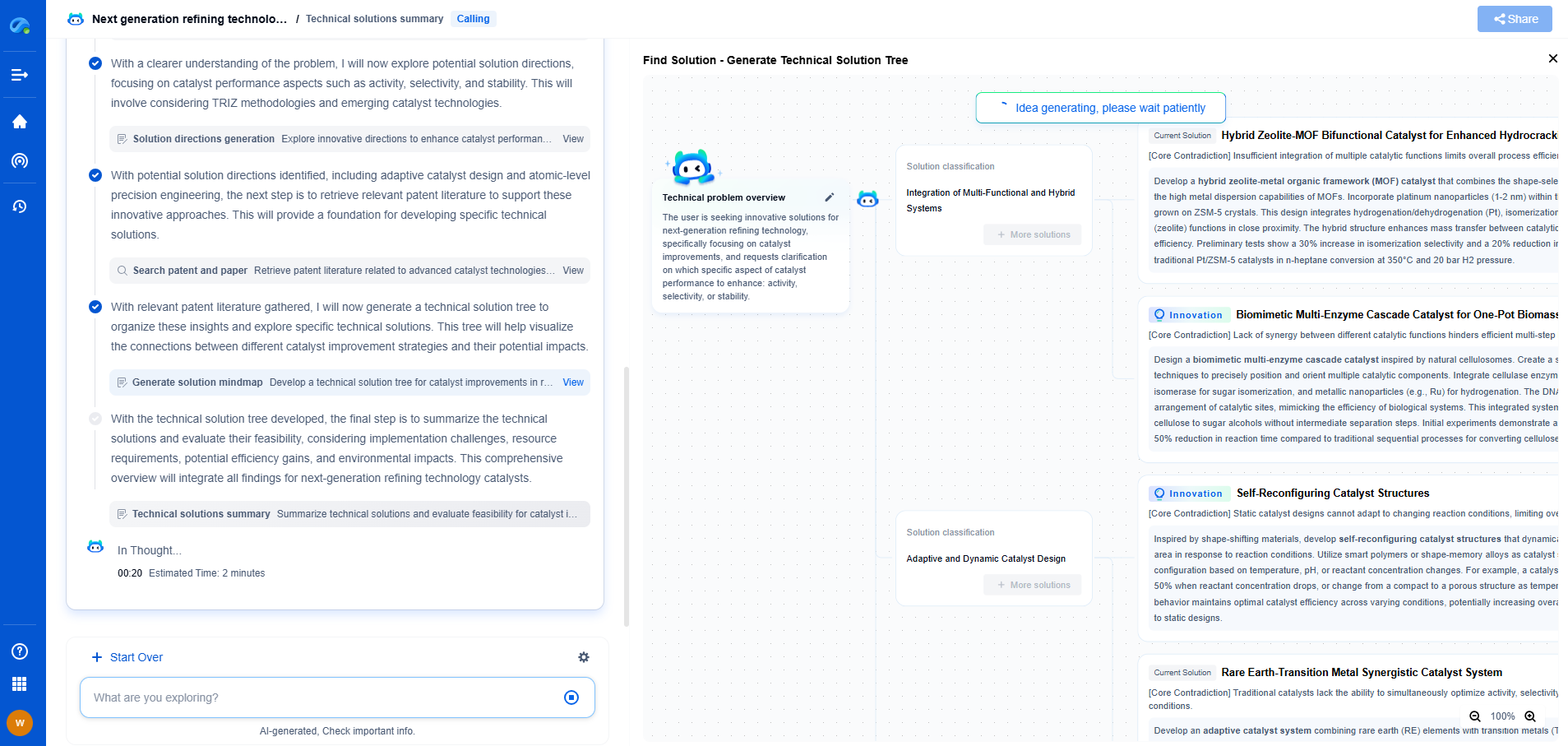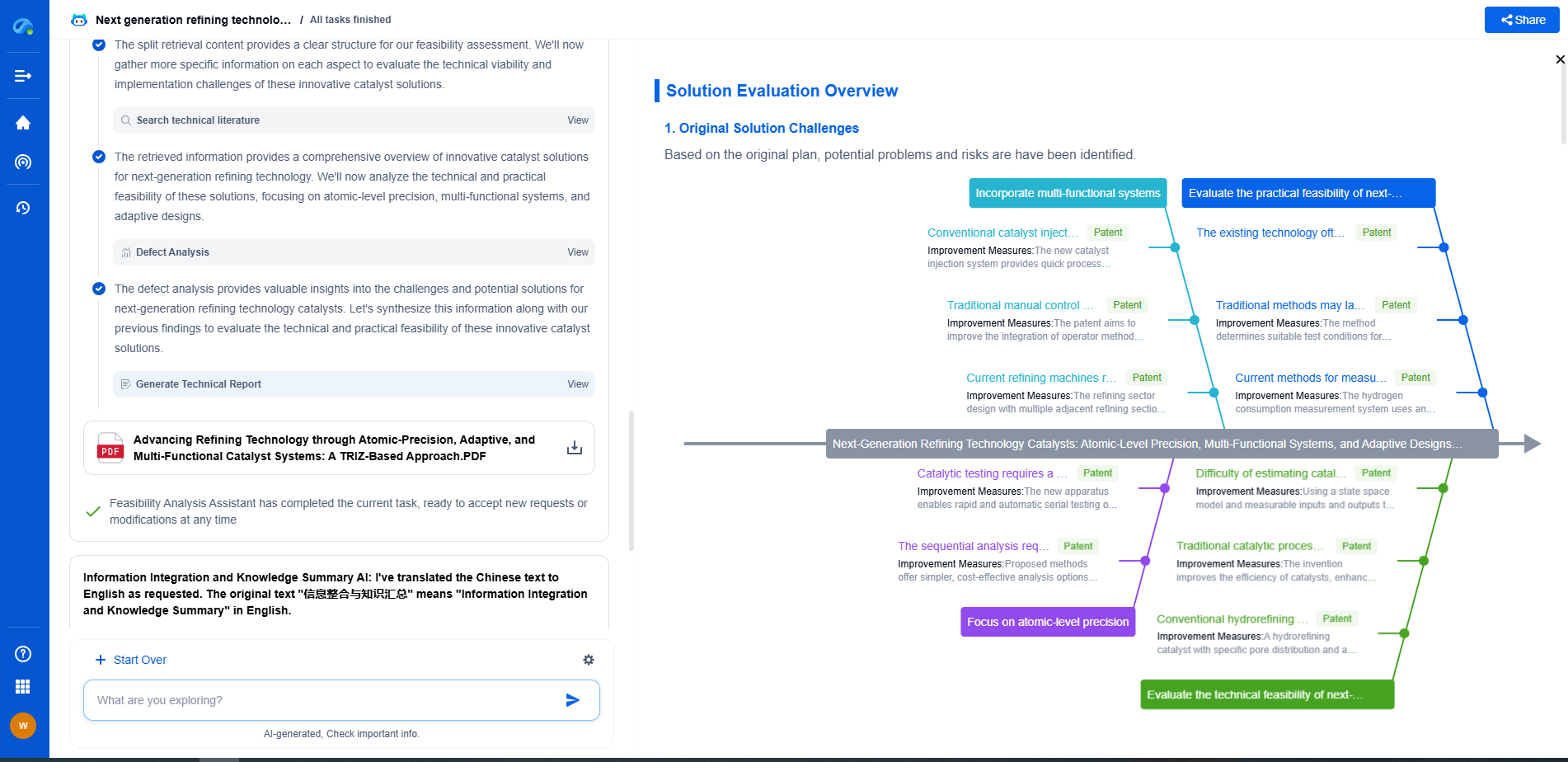What Is RF (Radio Frequency) Power and Its Use in Plasma Heating?
JUN 26, 2025 |
Radio Frequency (RF) power refers to the electromagnetic energy used in the frequency range of 3 kHz to 300 GHz. This range includes frequencies used in communication systems, radar, and various industrial applications. RF power has unique characteristics that make it suitable for a wide range of technological functions. It's particularly valued for its ability to penetrate materials and produce heat, which is why it plays a vital role in processes like plasma heating.
**What Is Plasma Heating?**
Plasma heating is a process used to elevate the temperature of plasma to very high levels, which is essential in various industrial and scientific applications. Plasma is an ionized gas consisting of free electrons and ions, and it's often referred to as the fourth state of matter. The heating process is critical for applications such as nuclear fusion, where achieving and maintaining the required temperatures is vital for sustaining fusion reactions. RF power is one of the most effective methods for heating plasma due to its ability to deliver energy efficiently and uniformly.
**How RF Power Is Used in Plasma Heating**
RF power is employed in plasma heating through a process known as RF heating or dielectric heating. This method involves the application of electromagnetic waves to the plasma, causing the charged particles within it to oscillate. As these particles move, they collide with each other, generating heat. This process can raise the temperature of the plasma to millions of degrees, which is necessary for applications like magnetic confinement fusion.
In fusion reactors, for example, RF power is used to heat the plasma to conditions where nuclear fusion reactions can occur. The energy from the RF waves is absorbed by the plasma, increasing the kinetic energy of the ions and electrons. This method of heating is preferred in many cases because it offers precise control over the energy input and can be used to target specific areas within the plasma.
**Advantages of RF Power in Plasma Heating**
One of the main advantages of using RF power for plasma heating is its efficiency. It allows for rapid and uniform heating, which is crucial for maintaining the stability of the plasma. Unlike other methods that may rely on direct contact or conduction, RF heating can penetrate deeply into the plasma, ensuring that the energy is evenly distributed.
Moreover, RF power systems can be finely tuned to adjust the frequency and power levels, providing flexibility in various applications. This adaptability makes it possible to optimize the heating process for different types of plasma and operational conditions. Additionally, RF heating systems are typically more compact and require less maintenance than some alternative methods, making them a practical choice for many industrial and scientific settings.
**Applications of RF Plasma Heating**
Beyond nuclear fusion, RF plasma heating has numerous applications in fields such as semiconductor manufacturing, materials processing, and surface treatment. In semiconductor fabrication, for instance, RF plasma is used for etching and deposition processes, where precise control over the plasma conditions is essential for producing high-quality components.
In materials science, RF heating is used to alter the properties of materials, such as improving hardness or wear resistance through techniques like plasma nitriding. The ability to modify surface characteristics without affecting the bulk properties of the material is a significant advantage in producing specialized components for aerospace, automotive, and other industries.
**Conclusion: The Future of RF Power in Plasma Heating**
RF power continues to be an area of active research and development due to its potential to revolutionize various industrial processes. As technology advances, the efficiency and precision of RF plasma heating systems are expected to improve even further. This progress could lead to more widespread use in emerging fields such as clean energy production, where sustainable and efficient methods of energy generation are increasingly in demand.
The versatile nature of RF power makes it a crucial component in the ongoing pursuit of technological innovation. As industries continue to explore and expand the applications of RF heating, it will likely remain a central tool in achieving the high-temperature conditions required for cutting-edge research and manufacturing.
Empower Electromagnetic Innovation with Patsnap Eureka
From high-frequency antenna arrays and electromagnetic shielding to plasma propulsion and wave-based energy transfer, the electromagnetic domain sits at the core of next-generation technologies. Yet navigating its vast landscape of patents, research papers, and evolving technical standards can be time-consuming and complex.
Patsnap Eureka, our intelligent AI assistant built for R&D professionals in high-tech sectors, empowers you with real-time expert-level analysis, technology roadmap exploration, and strategic mapping of core patents—all within a seamless, user-friendly interface.
👉 Experience Patsnap Eureka today and transform how your team navigates the complexity of electromagnetic innovation.
- R&D
- Intellectual Property
- Life Sciences
- Materials
- Tech Scout
- Unparalleled Data Quality
- Higher Quality Content
- 60% Fewer Hallucinations
Browse by: Latest US Patents, China's latest patents, Technical Efficacy Thesaurus, Application Domain, Technology Topic, Popular Technical Reports.
© 2025 PatSnap. All rights reserved.Legal|Privacy policy|Modern Slavery Act Transparency Statement|Sitemap|About US| Contact US: help@patsnap.com

